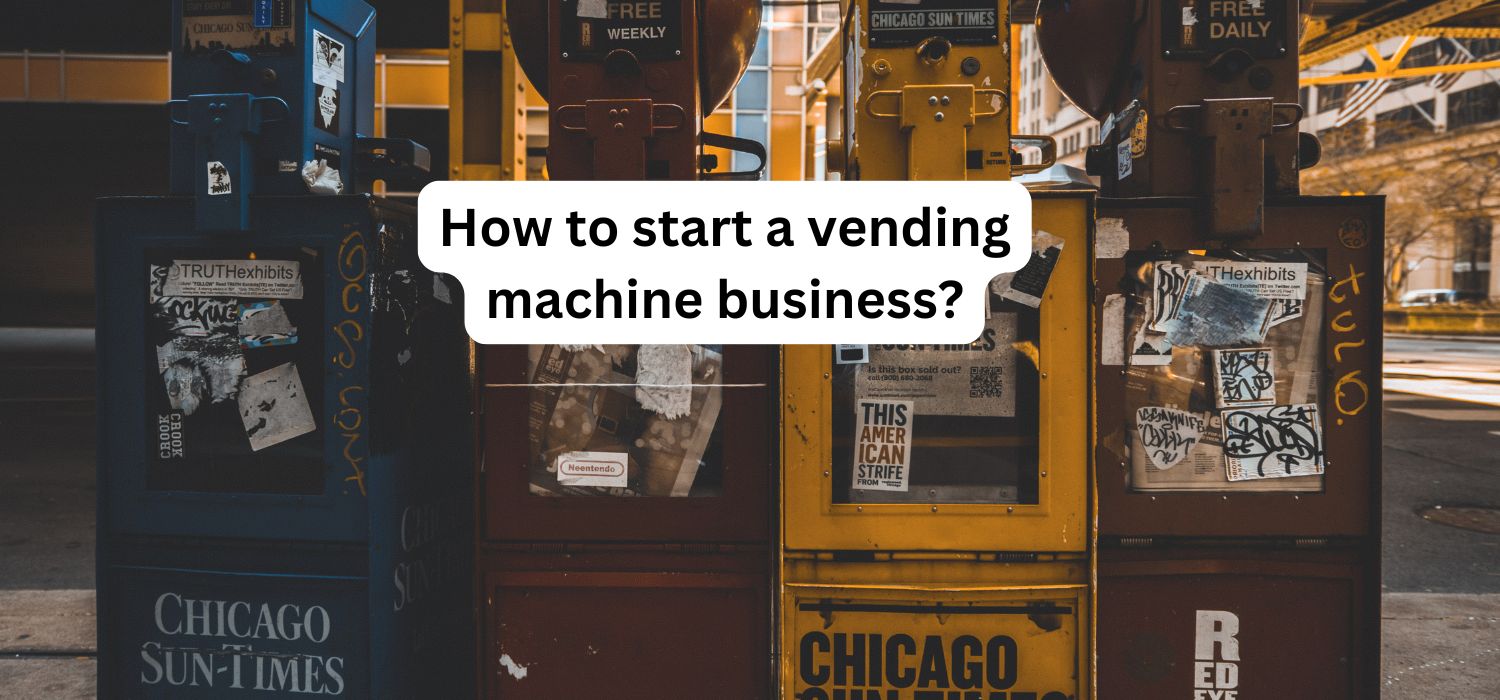Starting a vending machine business can be a lucrative and rewarding venture for entrepreneurs aiming to generate passive income. With a strategic approach and careful planning, you can set up, run, and grow a successful vending machine business that delivers consistent returns. In this article, we’ll dive deep into the key steps needed to launch and sustain a vending machine business, covering everything from planning and funding to marketing and maintenance.
Step 1: Research and Planning
The foundation of a successful vending machine business is thorough research and planning. Start by identifying a profitable target market and researching the types of products that resonate with that demographic. For instance, healthy snacks might appeal to gym-goers, while cold drinks and snacks could be popular in high-traffic office buildings or schools. Consider key factors like:
- Foot Traffic: High-foot-traffic areas, like shopping malls, office buildings, or transportation hubs, offer better visibility and increased sales potential.
- Demographics: Tailor your product selection to the preferences of the area’s residents or frequent visitors, such as healthier options for fitness centers or tech accessories near colleges.
- Competition: Study other vending businesses in the area to determine what products are already being offered and look for ways to stand out. You might choose to offer exclusive products, better prices, or superior customer service.
Crafting a well-rounded business plan that includes projected expenses, revenue goals, target locations, and an understanding of the local market will lay the groundwork for your success. Your business plan will also be essential when seeking funding.
Step 2: Secure Funding
With your business plan in place, the next step is to secure the capital needed to buy vending machines, stock inventory, and cover initial expenses like marketing. Funding can come from various sources:
- Personal Savings: Using personal funds can help avoid debt, but ensure you have enough reserves for operating expenses.
- Loans: Small business loans or equipment loans can help cover upfront costs. Make sure to review interest rates and repayment terms before committing.
- Grants: Some local governments offer grants to new businesses. Look into small business development grants or industry-specific grants.
- Investors: If you have a solid business plan, you may attract investors who are interested in a share of your profits in return for financial support.
Determine the best funding source based on your financial situation, and remember to consider factors such as loan terms, interest rates, and repayment plans if taking on debt.
Step 3: Purchase and Install Vending Machines
Once funding is secured, it’s time to select and purchase vending machines. There are various types, from snack and drink machines to specialized ones offering coffee, ice cream, or even electronics. Key considerations when purchasing include:
- Machine Type: Decide based on your target market and location. Some machines have more features, such as digital displays and payment options, which can attract a tech-savvy audience.
- Condition: New machines tend to be more reliable but come at a higher cost, while refurbished machines are more affordable yet may require maintenance sooner.
- Location: Choose locations with high visibility and accessibility, such as near entrances, break rooms, or common areas. Securing a high-traffic area can significantly boost sales.
When installing machines, coordinate with property owners or managers to obtain the necessary permissions and set terms for placing your machines on their premises. It may also be beneficial to draft a formal agreement that outlines responsibilities, rent fees, and terms of service.
Step 4: Stock and Maintain Inventory
Keeping your vending machines stocked with fresh products is crucial for customer satisfaction and retention. A few tips to ensure efficient inventory management include:
- Stock Management: Track your inventory and use sales data to understand which products perform well. This allows you to adjust product offerings to match customer preferences.
- Regular Maintenance: Ensure machines are cleaned and well-maintained to prevent malfunctions. Check machines regularly for any technical issues and address them promptly.
- Product Rotation: Avoid keeping items in the machine for too long, especially perishable items. Rotate stock regularly to ensure freshness and prevent waste.
Using a system to track inventory can help streamline operations and keep you updated on popular items. It’s also worth considering a restocking schedule, especially for busy locations, to ensure you never run out of customer favorites.
Step 5: Marketing and Promotion
To grow your vending machine business, a solid marketing strategy is essential. Here are ways to increase brand awareness and encourage customer engagement:
- Social Media Marketing: Use social media platforms to promote your vending locations and highlight special deals or new products. Share behind-the-scenes updates or customer testimonials to build a loyal following.
- Email Campaigns: Capture customer emails through loyalty programs or online promotions. Send regular newsletters with updates, discounts, and seasonal offers.
- Local Partnerships: Partnering with local businesses or events can help drive traffic to your machines. For example, placing your machines in venues that host events, such as gyms, community centers, or schools, can increase visibility and attract customers.
- Incentives: Offer promotions, discounts, or a loyalty program to encourage repeat purchases. For instance, you could implement a “Buy 10, Get 1 Free” promotion or offer seasonal discounts to attract more buyers.
- Signage and Branding: Ensure your machines are visually appealing with attractive signage that communicates what you offer. Clearly display payment methods and keep machine exteriors clean to make a positive impression.
A combination of online and offline marketing strategies will help build awareness, increase foot traffic, and drive sales over time. With the right promotional efforts, your vending machine business can attract a steady stream of customers and grow its presence.
Step 6: Monitor and Expand Your Business
Once your vending machine business is up and running, continuously monitor your progress to identify areas for improvement. Consider expanding your business by:
- Adding New Locations: Once your initial machines are profitable, look for additional high-traffic areas.
- Offering New Products: Stay updated on consumer trends and introduce new products that align with customer demands.
- Upgrading Machines: As your business grows, consider upgrading to machines with advanced features like touch screens, cashless payment options, or more energy-efficient models.
Analyzing sales data and customer feedback will help you make data-driven decisions and adapt your business model to maximize profitability. Expansion can lead to more income streams and broaden your business’s reach.
Final Thoughts
Starting a vending machine business can be a profitable and manageable way to generate passive income, especially with careful planning, strategic locations, and consistent marketing. By researching the market, securing funding, choosing the right locations, and maintaining your machines effectively, you can build a business that attracts customers and keeps them coming back. With a commitment to quality service and smart growth strategies, your vending machine business can thrive in a competitive market and become a lasting success.



